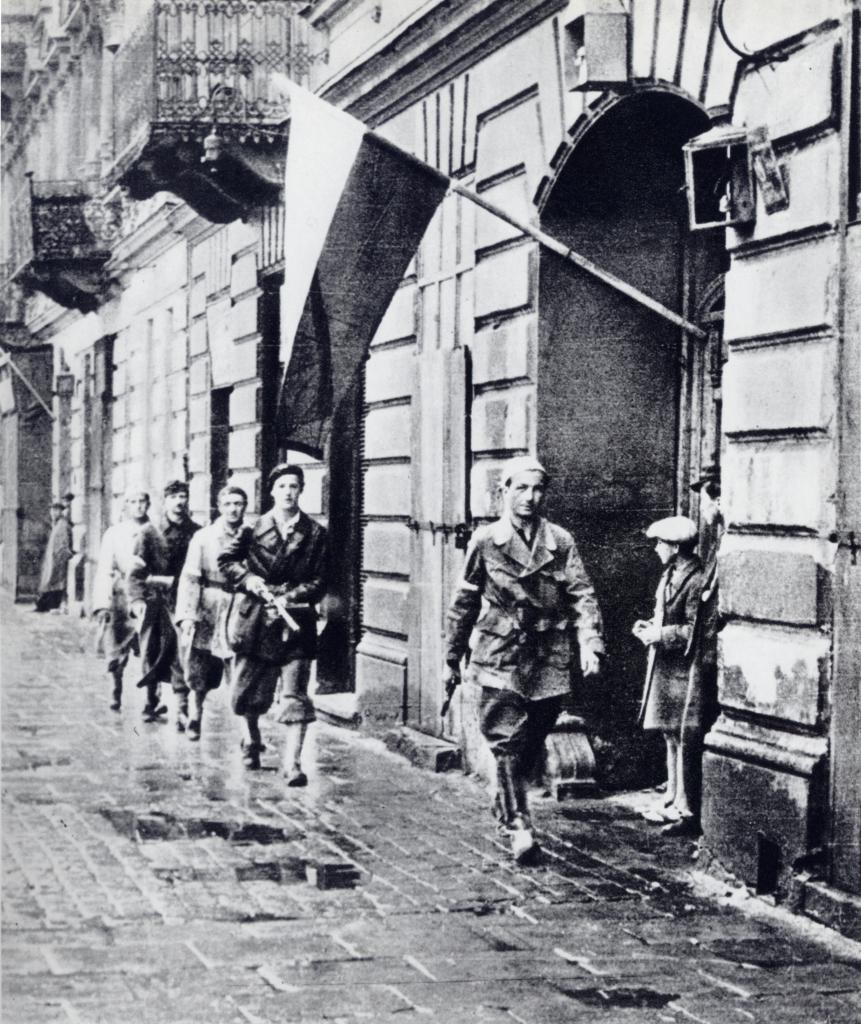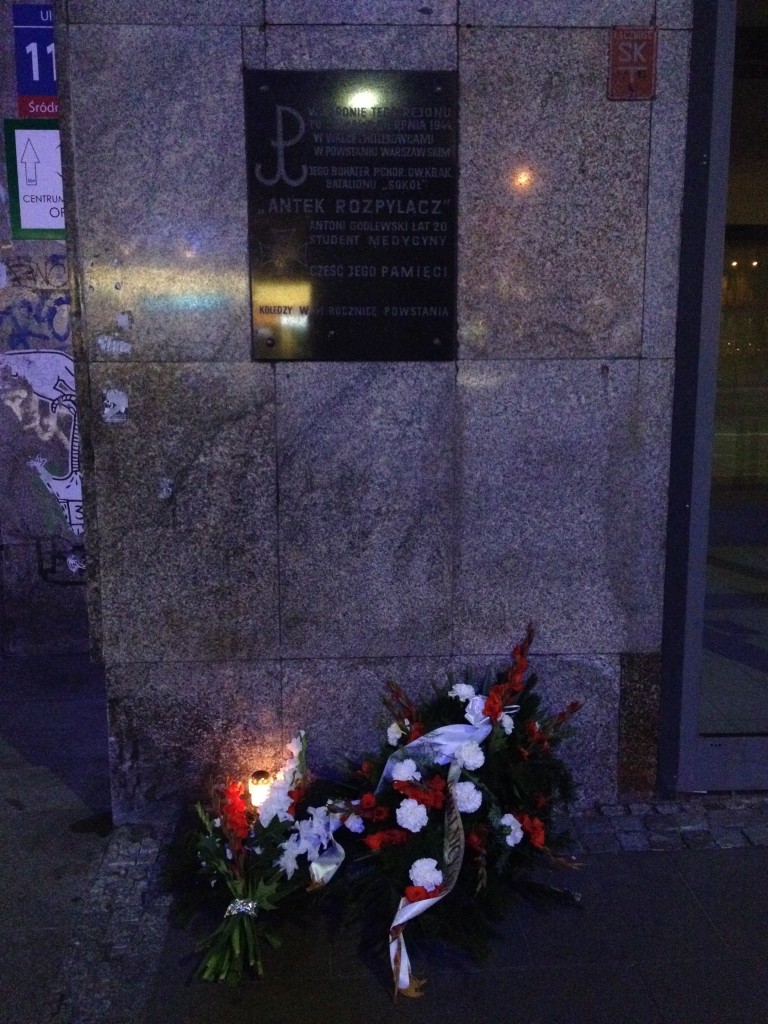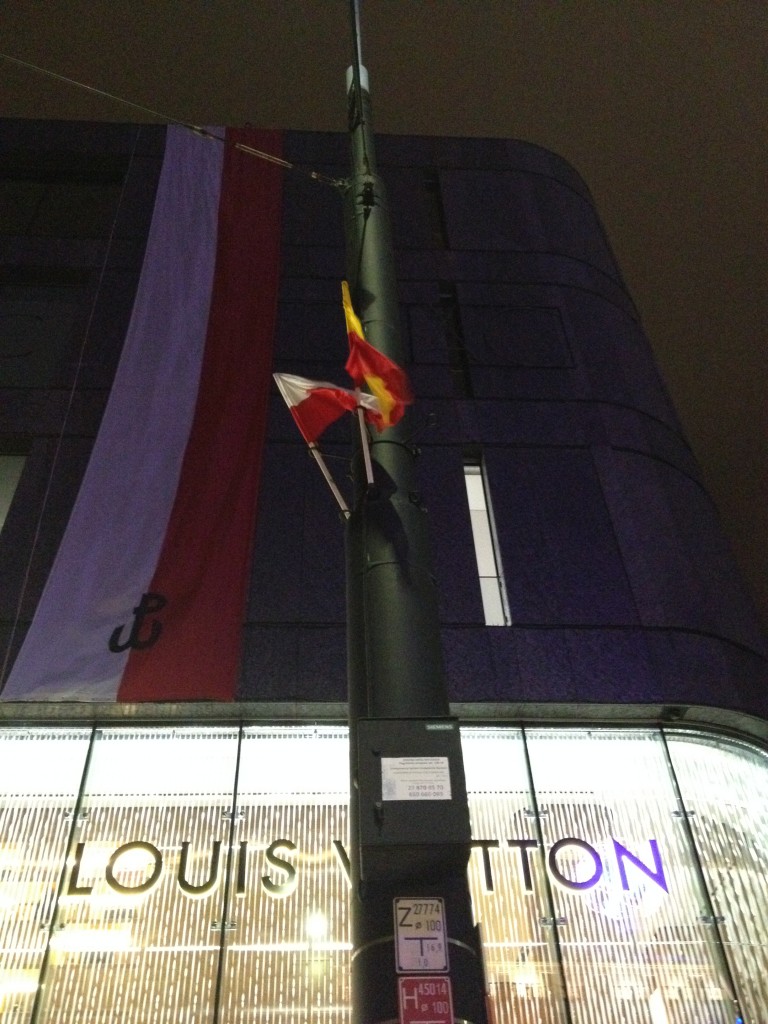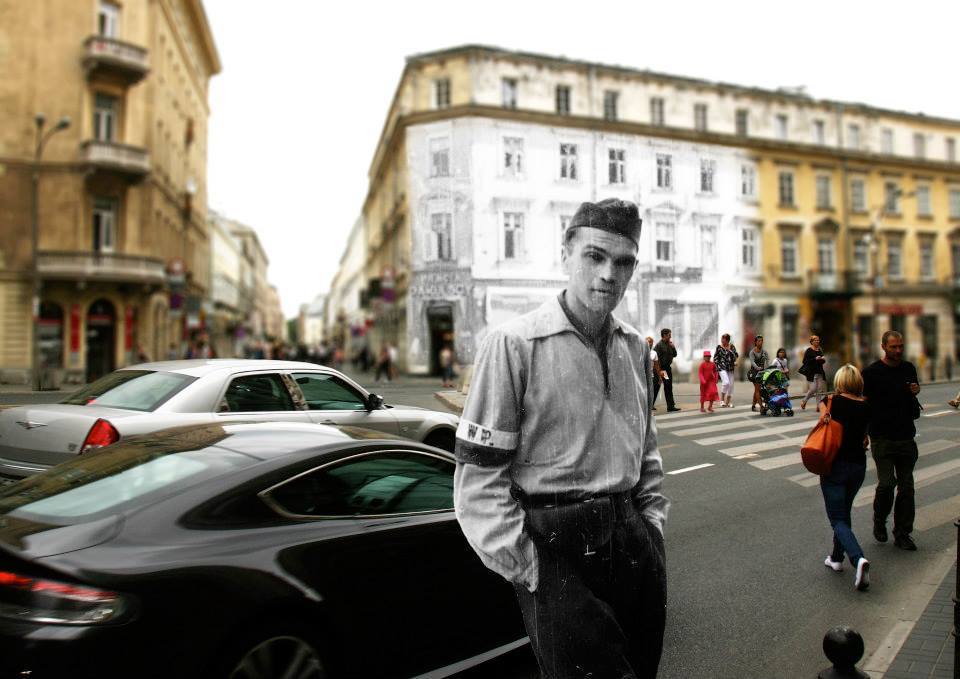
August 1, 1944, 70 years ago today, at 5pm, “W Hour”, the
Warsaw Uprising began. It was hoped that this battle would liberate Poland’s capital, days before the Soviet Red Army arrived. The Polish Home Army expected the fighting to last several days. The Uprising lasted 63 days, in brutal conditions comparable to the battles of Stalingrad and Berlin. The limited weapons and supplies, coupled with the heroic efforts of Allied pilots to resupply the combatants, was not enough to overcome the significant German advantage in armament, ammunition, artillery and air forces.
By the end of the Uprising on October 3, several hundred thousand Polish citizens and soldiers lay dead, many buried in improvised graves in the streets and courtyards of the ruined capital, many others buried under a sea a rubble that the city had become. Hundreds of thousands more would be exiled from the city and sent to forced labor sites throughout Germany. Besides a few hundred “
Robinson Crusoes” living in the rubble, Warsaw was a virtual wasteland, until it’s “liberation” by the Soviets in January 1945.

All of Warsaw stops for several minutes at 5pm every August 1 as a tribute to the start of the Warsaw Uprising. The 70th anniversary this year was especially meaningful as the number of combatants and civilians who witnessed or took part in the Uprising is rapidly dwindling. Most are in their 80s or 90s.


The Warsaw Uprising was a seminal event in modern Polish history. The decision to rise against the Nazi occupiers in the capital is still a highly controversial and hotly debated one. The passions that this subject produces however won’t change the fact that the Uprising happened and the damage done can never be reversed. What we can do, especially Poles, is attempt to learn the lessons of history to build a better future.
One thing that nearly everyone will agree on is the immense bravery of young men a women, many teenagers and in their 20s, who lost their lives in the face of overwhelming odds, in the hope that their sacrifice would bring Poland closer to freedom. Those living in a free Poland today have an immense responsibility on their shoulders to prove that those lives weren’t given up in vain.

For an excellent, concise introduction, please read “
Remembering the Warsaw Uprising“, by my father, Dr. Maciej Siekierski.
 August 1, 1944, 70 years ago today, at 5pm, “W Hour”, the Warsaw Uprising began. It was hoped that this battle would liberate Poland’s capital, days before the Soviet Red Army arrived. The Polish Home Army expected the fighting to last several days. The Uprising lasted 63 days, in brutal conditions comparable to the battles of Stalingrad and Berlin. The limited weapons and supplies, coupled with the heroic efforts of Allied pilots to resupply the combatants, was not enough to overcome the significant German advantage in armament, ammunition, artillery and air forces.
By the end of the Uprising on October 3, several hundred thousand Polish citizens and soldiers lay dead, many buried in improvised graves in the streets and courtyards of the ruined capital, many others buried under a sea a rubble that the city had become. Hundreds of thousands more would be exiled from the city and sent to forced labor sites throughout Germany. Besides a few hundred “Robinson Crusoes” living in the rubble, Warsaw was a virtual wasteland, until it’s “liberation” by the Soviets in January 1945.
August 1, 1944, 70 years ago today, at 5pm, “W Hour”, the Warsaw Uprising began. It was hoped that this battle would liberate Poland’s capital, days before the Soviet Red Army arrived. The Polish Home Army expected the fighting to last several days. The Uprising lasted 63 days, in brutal conditions comparable to the battles of Stalingrad and Berlin. The limited weapons and supplies, coupled with the heroic efforts of Allied pilots to resupply the combatants, was not enough to overcome the significant German advantage in armament, ammunition, artillery and air forces.
By the end of the Uprising on October 3, several hundred thousand Polish citizens and soldiers lay dead, many buried in improvised graves in the streets and courtyards of the ruined capital, many others buried under a sea a rubble that the city had become. Hundreds of thousands more would be exiled from the city and sent to forced labor sites throughout Germany. Besides a few hundred “Robinson Crusoes” living in the rubble, Warsaw was a virtual wasteland, until it’s “liberation” by the Soviets in January 1945.
 All of Warsaw stops for several minutes at 5pm every August 1 as a tribute to the start of the Warsaw Uprising. The 70th anniversary this year was especially meaningful as the number of combatants and civilians who witnessed or took part in the Uprising is rapidly dwindling. Most are in their 80s or 90s.
All of Warsaw stops for several minutes at 5pm every August 1 as a tribute to the start of the Warsaw Uprising. The 70th anniversary this year was especially meaningful as the number of combatants and civilians who witnessed or took part in the Uprising is rapidly dwindling. Most are in their 80s or 90s.

 The Warsaw Uprising was a seminal event in modern Polish history. The decision to rise against the Nazi occupiers in the capital is still a highly controversial and hotly debated one. The passions that this subject produces however won’t change the fact that the Uprising happened and the damage done can never be reversed. What we can do, especially Poles, is attempt to learn the lessons of history to build a better future.
One thing that nearly everyone will agree on is the immense bravery of young men a women, many teenagers and in their 20s, who lost their lives in the face of overwhelming odds, in the hope that their sacrifice would bring Poland closer to freedom. Those living in a free Poland today have an immense responsibility on their shoulders to prove that those lives weren’t given up in vain.
The Warsaw Uprising was a seminal event in modern Polish history. The decision to rise against the Nazi occupiers in the capital is still a highly controversial and hotly debated one. The passions that this subject produces however won’t change the fact that the Uprising happened and the damage done can never be reversed. What we can do, especially Poles, is attempt to learn the lessons of history to build a better future.
One thing that nearly everyone will agree on is the immense bravery of young men a women, many teenagers and in their 20s, who lost their lives in the face of overwhelming odds, in the hope that their sacrifice would bring Poland closer to freedom. Those living in a free Poland today have an immense responsibility on their shoulders to prove that those lives weren’t given up in vain.
 For an excellent, concise introduction, please read “Remembering the Warsaw Uprising“, by my father, Dr. Maciej Siekierski.
For an excellent, concise introduction, please read “Remembering the Warsaw Uprising“, by my father, Dr. Maciej Siekierski.
The sad thing about War is the elite banksters who financed both sides of that hustle known as War wait until the memeory of the struggle and toil of that calamity has vanished from the public mind in order to hoist a whole new round of tragedy on the sleeping, ignorant masses. If people would realize theyr’e being played by the matrix they would oppose all of that non-sense and not partake in the rich mans game that buries the poor.
Thanks for the comment. You may be aware of Antony Sutton’s books, including “Wall Street and the Rise of Hitler” and “Wall Street and the Bolshevik Revolution”, I will review these in the future.
Arthur Koestler’s “The 13th Tribe” and Benjamin Freedman’s “Facts Are Facts” are related to the social engineering known as war as well.